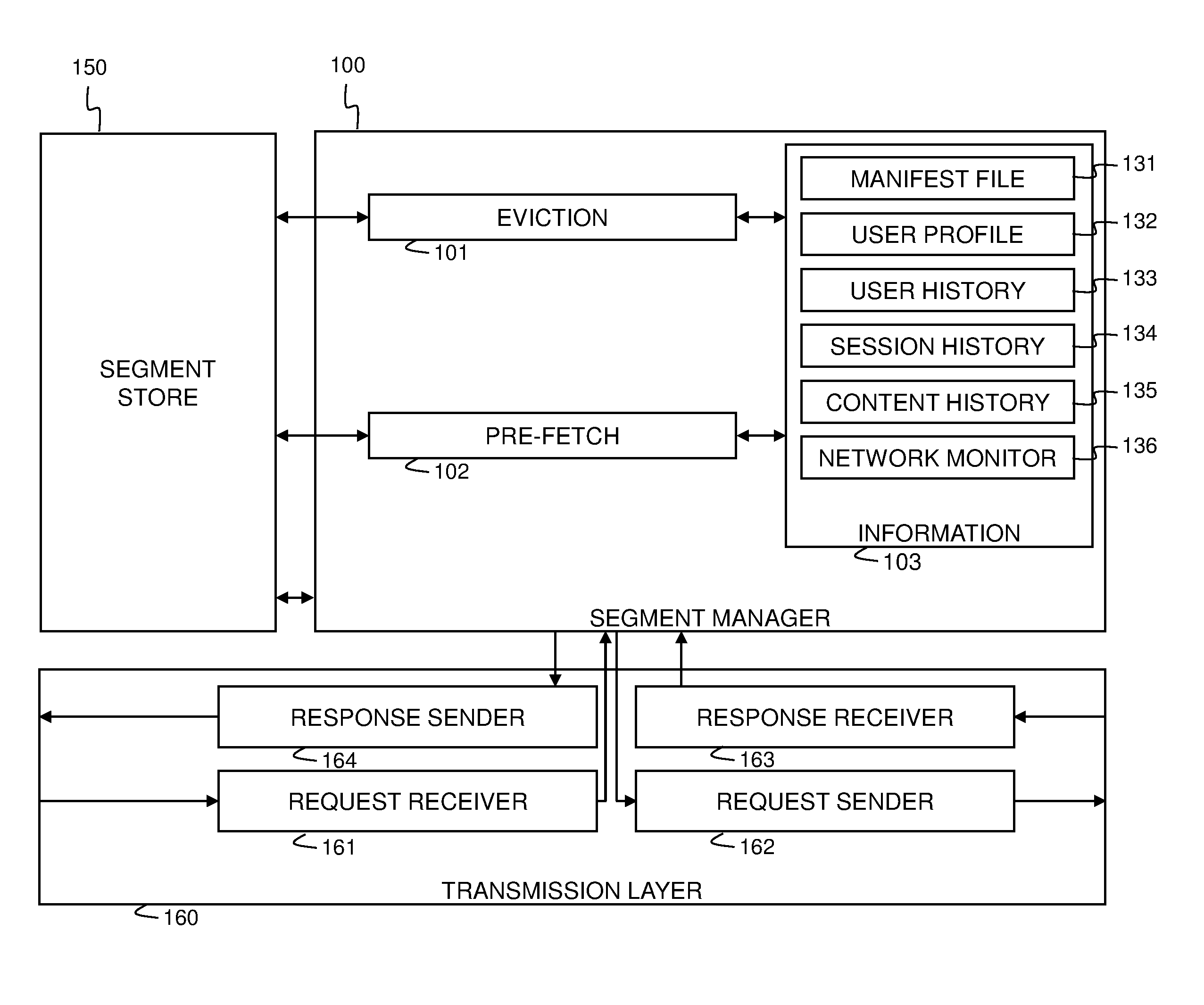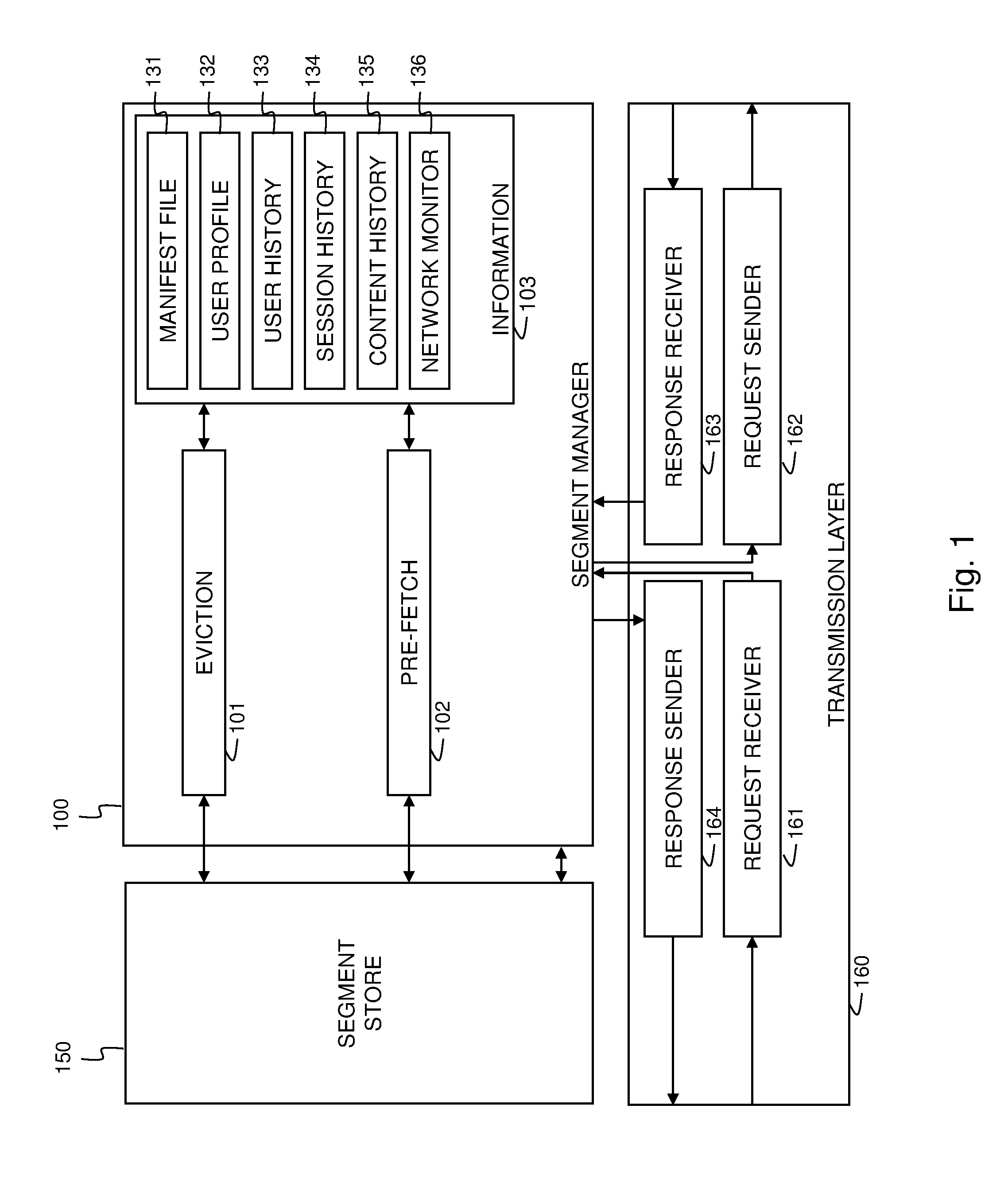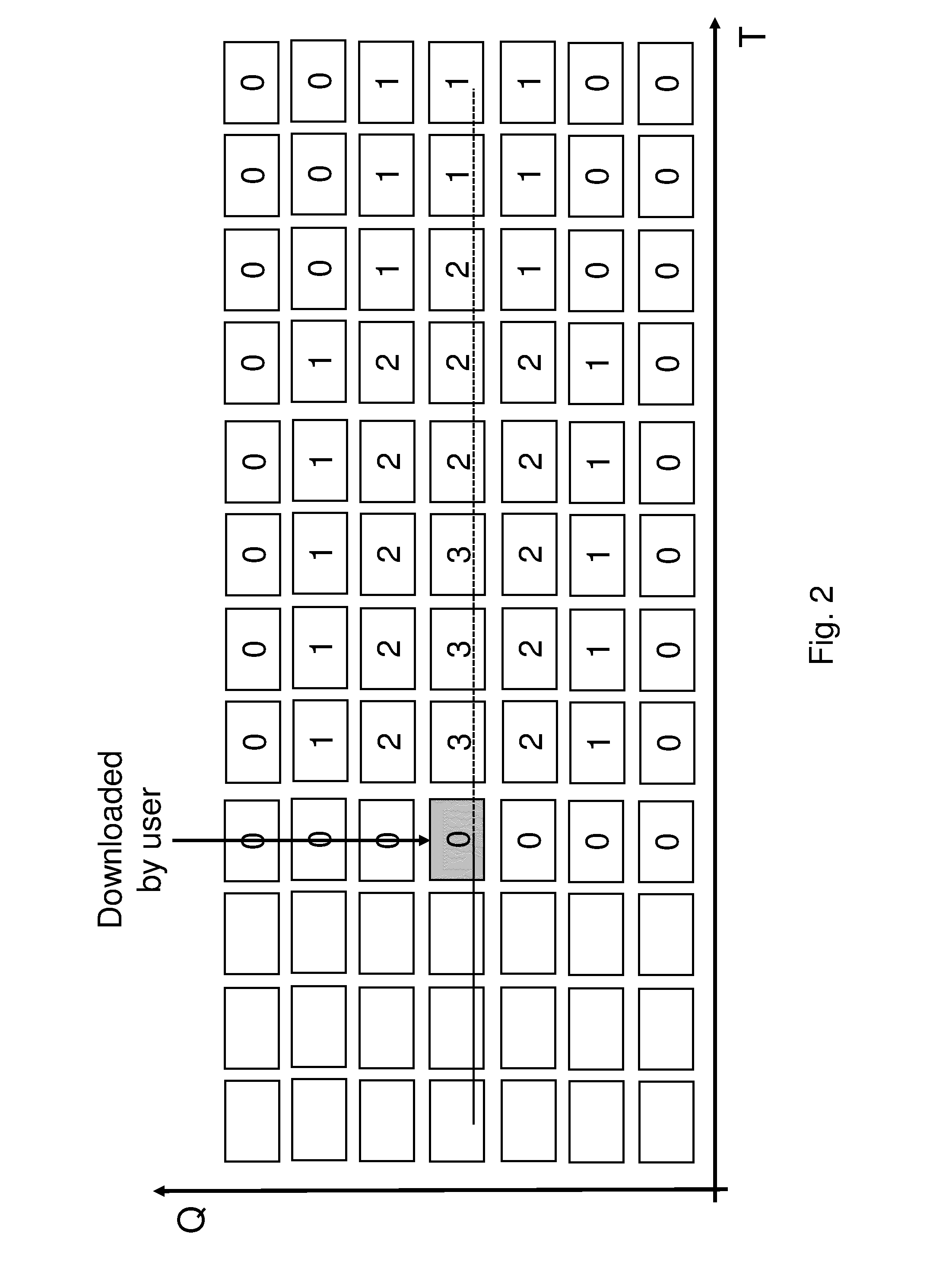Cache manager for segmented multimedia and corresponding method for cache management
a technology for managing caches and multimedia, applied in special data processing applications, instruments, electric digital data processing, etc., can solve the problems of significant increase of cache hit rates, unoptimized cache hit rates, and consequently the benefit/cost ratio of such cache deploymen
- Summary
- Abstract
- Description
- Claims
- Application Information
AI Technical Summary
Benefits of technology
Problems solved by technology
Method used
Image
Examples
first embodiment
[0043]The segment manager 100 represents the cache manager according to the present invention. The segment manager 100 is responsible for answering requests for segments from clients, contains a pre-fetch component 102 for pre-fetching and inserting segments in the segment store 150, and an eviction component 101 for eviction or removal of segments from the segment store 150. Additionally, the segment manager 100 is also responsible for requesting segments from a remote entity, a mass multimedia store, when these segments are not present in the segment store 150 and will have the possibility to store these segments in the segment store 150 when it decides to do so. At last, the segment manager 150 will also store information on the requests it sees into various information components 103 that are responsible for maintaining relevant data on the multimedia traffic. These information components 103 may be internal or external to the segment manager 100.
[0044]In the information compone...
third embodiment
[0059]In an alternative embodiment that also maintains importance values for segments, the cache manager assigns a value to specific segments that are in the cache. It is assumed that all the segments have the same duration. When a segment is removed from the cache, the eviction component in the cache manager selects the one with the lowest value. In the algorithm, S(m) denotes the set of all segments of a movie m. Each segment is identified by an integer value s representing the order in which the segments are typically downloaded and Q(s) represents the quality corresponding to a segment s. The cache importance of a segment is the value that represents to what extent it is interesting to keep this segment in the cache. The scheme to assign these values in the third embodiment is as follows:
For all the active users u that are watching a movie m {For all i belonging to S(m), where i>s {i_importance = i_importance + f(i, s);}}
Herein:
[0060]m represents the movie being watched by user ...
fourth embodiment
[0064]In the cache manager according to the present invention, a learning mechanism is used to learn the likelihoods of requesting segments close to the currently watched segments, either in time or in quality. One plausible technique consists in training a Markov chain for different historical requesting paths. Given a training set, the probability of requesting segment Q(s+1) can be estimated as P(Q(s+1)|Q(s),Q(s−1), . . . , Q(1)), which assumes that the requesting quality by HTTP adaptive streaming in the near future (s+1) does not only depend on the current quality, but also rely on the historical requesting qualities.
[0065]To simplify the computation and avoid the data sparseness, P(Q(s+1)|Q(s), Q(s−1), . . . , Q(1)) can be approximated as P(Q(s+1)|Q(s), Q(s−1), . . . , Q(s−n)), where n is denoted as the length of the retrieved quality path. The parameter n needs to be optimized. Similarly, it is possible to statistically estimate P(Q(s+2),Q(s+1)|Q(s), Q(s−1), . . . , Q(s−n)), ...
PUM
 Login to View More
Login to View More Abstract
Description
Claims
Application Information
 Login to View More
Login to View More - R&D
- Intellectual Property
- Life Sciences
- Materials
- Tech Scout
- Unparalleled Data Quality
- Higher Quality Content
- 60% Fewer Hallucinations
Browse by: Latest US Patents, China's latest patents, Technical Efficacy Thesaurus, Application Domain, Technology Topic, Popular Technical Reports.
© 2025 PatSnap. All rights reserved.Legal|Privacy policy|Modern Slavery Act Transparency Statement|Sitemap|About US| Contact US: help@patsnap.com



